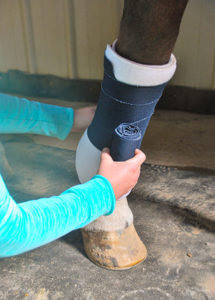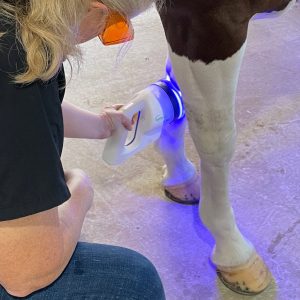Friesians’ Blood Work Alike but Different
When it comes down to the blood coursing their veins, a horse is a horse, right? Not necessarily, say researchers who compared Friesians’ complete blood count and chemistry values to general horse population reference intervals for adult horses, revealing that veterinarians caring for the 10,000-12,000 Friesians in North America should interpret a few test results differently than they would in the average adult horse.
Katherine Fox, DVM, head of research at The Fenway Foundation for Friesian Horses, based in Hortonville, Wisc., worked with researchers at the University of Wisconsin’s School of Veterinary Medicine, in Madison, and with IDEXX Laboratories, in Columbus, Ohio, to determine these reference intervals (RI) for Friesians. She presented the group’s results at the 2013 American Association of Equine Practitioners’ Convention, held Dec. 7-11 in Nashville, Tenn.
Fox said that while a lot of research is available on problems commonly referred to as the “Big Four” in Friesians—megaesophagus (chronic dilation of the esophagus), aortic rupture, dwarfism, and hydrocephalus (fluid on the brain)—there hasn’t been information available on basic differences between this breed and other full-sized horse breeds. Recently, Friesian owners contacted The Fenway Foundation, a Friesian-focused organization, with a desire to understand “more subtle concerns” that could be evident on blood work. Few studies exist on breed-specific reference intervals across the equine species.
“Knowledge of how Friesian horses are alike and different (as compared to other breeds), with respect to their blood values, will allow for more accurate diagnosis, treatment, and more reliable response to therapy,” she said
Create a free account with TheHorse.com to view this content.
TheHorse.com is home to thousands of free articles about horse health care. In order to access some of our exclusive free content, you must be signed into TheHorse.com.
Start your free account today!
Already have an account?
and continue reading.

Written by:
Stephanie L. Church, Editorial Director
Related Articles
Stay on top of the most recent Horse Health news with












